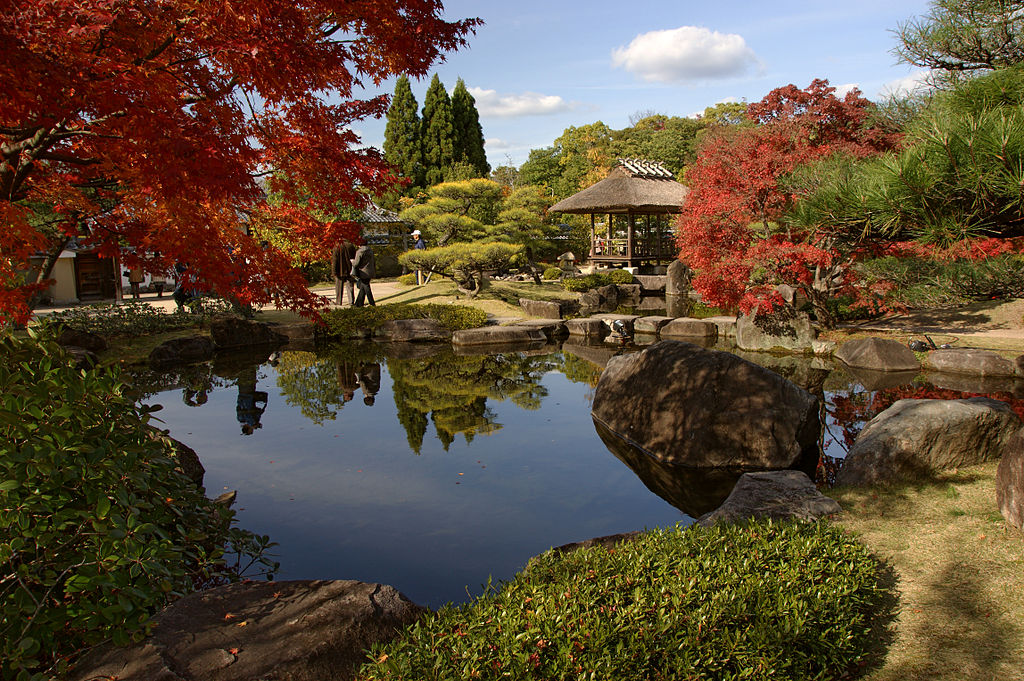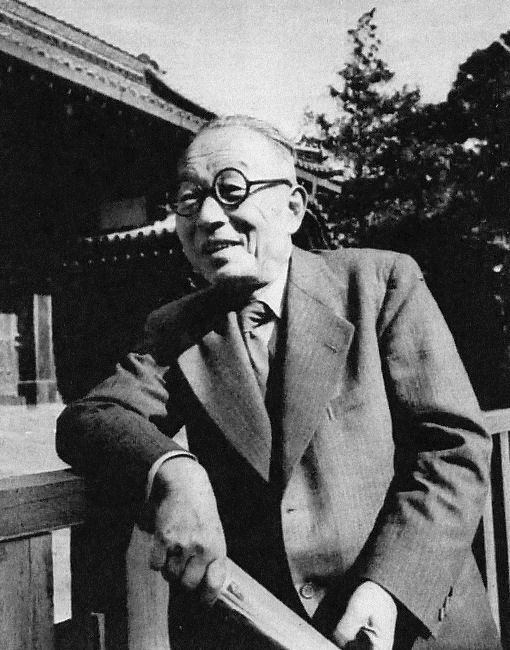
“Therefore, if human being is not simply the individual person, it is also not simply society. Within human being, these two are unified dialectically” (Watsuji Tetsuro).
Watsuji Tetsuro is not, strictly speaking, a member of the Kyoto School, as he completed his undergraduate and postgraduate studies at Tokyo University, and spent most of his teaching career there. He did, however, also teach at Kyoto University from 1925 to 1934, where he was responsible for the Ethics course, except for a short period during which he traveled to Europe, and studied Martin Heidegger’s Being and Time that had just been published. Robert Carter, the author of the entry on Watsuji in the Stanford Encyclopedia of Philosophy, writes that, as he worked alongside Nishida Kitaro, Tanabe Hajime, and Nishitani Keiji, it is clear that “the influence and tone of his work clearly show him to be a like-minded thinker.”
Life and Career
Watsuji was born in 1889 (the same year as Heidegger), in the village of Nibuno, now part of Himeji City, in the Hyogo Prefecture located in the Kansai region of Honshu, Japan’s main island. Himeji is best known for its white Himeji Castle, one of the few original castles from Japan’s feudal period, and for its splendid Koukoen garden.
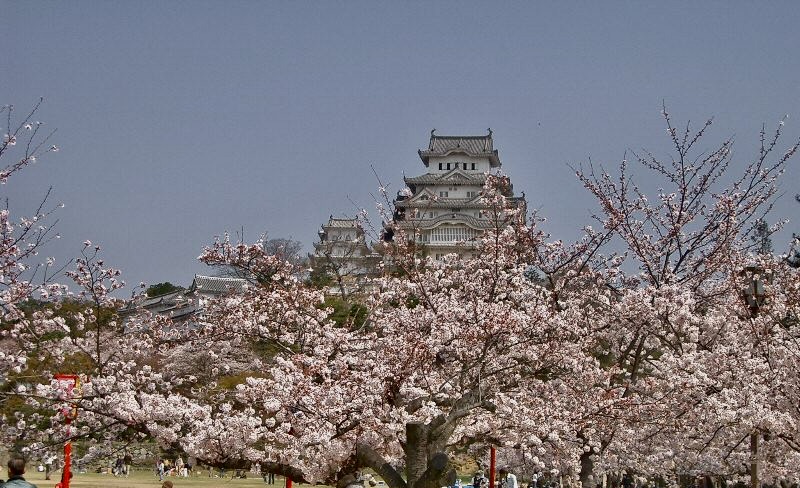
Carter tells us that “the young Watsuji had little interest in things Japanese, for his passion was for Western literature, especially the poetry of Byron. He wished to emulate Byron, hoping to be a poet himself. But he was also taken with Nietzsche’s philosophy. It was the emphasis on individuality that enthralled him, a way of life so different from the Japanese emphasis on the importance of the group.”
Watsuji attended Tokyo Imperial University (then called the First Higher School) from 1906 to 1909, and then the Graduate School of that university from 1909 to 1912. His first thesis on Nietzsche was rejected because it was deemed inappropriate for a postgraduate thesis in philosophy. In fact, Carter notes, “until quite recently in the West, Nietzsche was studied in departments of literature and not in departments of philosophy.” So Watsuji had to write a second thesis, this time on Arthur Schopenhauer, entitled “Schopenhauer’s Pessimism and Theory of Salvation.” Watsuji was, however, able to publish his Nietzschean Studies at a later time. In 1915, Watsuji also studied Kierkegaard, though, “at the same time he continued to study the Romantic poets, Byron, Shelley, Tennyson and Keats, being torn between his literary and philosophical interests.” In any case, Carter adds, “perhaps because his literary attempts were ‘complete failures’, he decided to give up literary creation and devoted all his exertions to the writing of critical essays and philosophical treatises.”
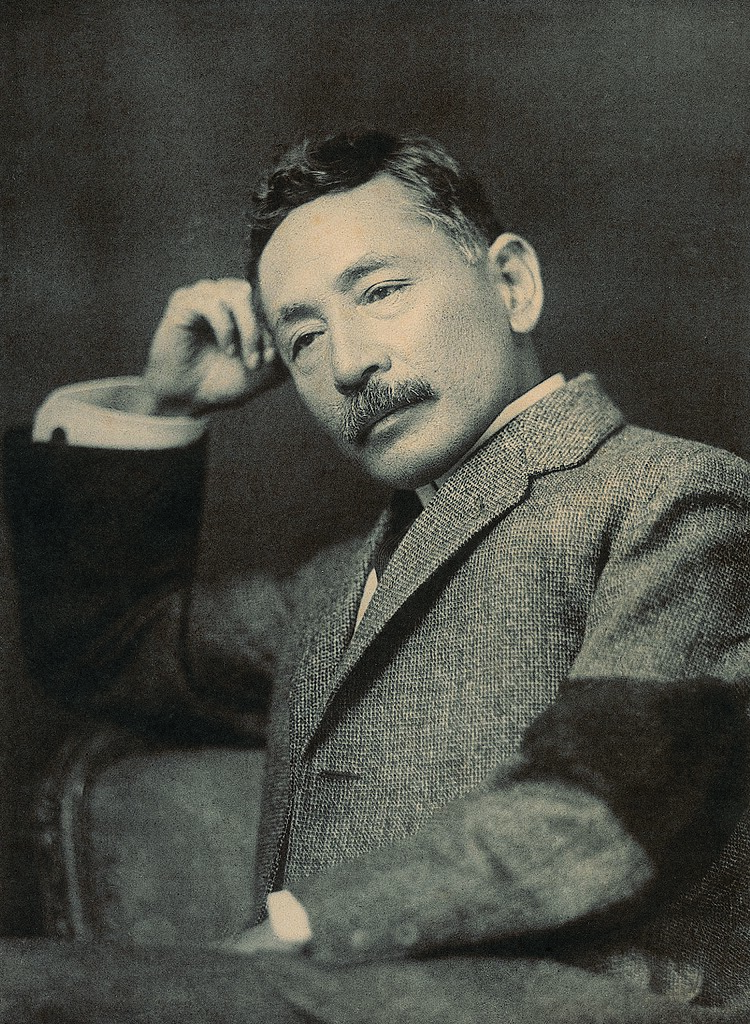
Watsuji’s interest in the expression of individuality also led him to study Natsume Soseki, a brilliant Japanese novelist Nishitani also read, who, Carter tells us, was the most important influence in his early years. Even though, during his studies at the First Higher High School, Watsuji had already opted for a career in philosophy, he had kept on reading Soseki. Quoting James Kodera, Carter says that Watsuji found in Soseki “a human being struggling with the human condition in the particularities of early modern Japan, suddenly exposed to the West and yet struggling to sustain his own identity.” Soseki, however, was already moving away from the values which he had come to associate with Western culture to go back to the values of his own Japanese cultural tradition. Carter adds that Watsuji only met Soseki in 1913, and became a member of a study group that met at Soseki’s home. When Soseki died three years later, Watsuji composed a “lengthy reminiscence” of him. These reflections, published in 1918 “marked Watsuji’s own transformation from advocate of Western ways to critic of the West, turning toward a reconsideration of Japanese and Eastern cultural resources.”
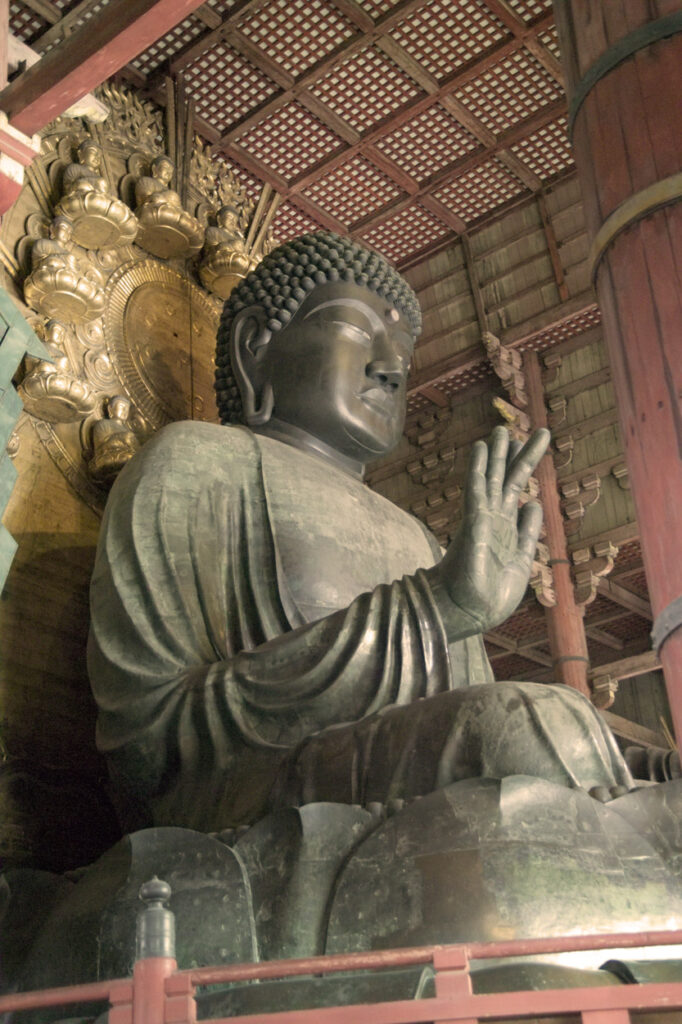
In 1919, Watsuji published A Pilgrimage to [Nara’s] Ancient Temples, which became a bestseller. Thomas Kasulis tells us that, “For him, the quintessence of Nara culture was not in its Man’yoshu verses or its Kojiki myths, but was instead embodied in the Buddhist architecture and sculptures of the Tenpyo era (729-749).” The more than 4,500 waka poems of the Man’yōshū reflected ancient Japanese themes, extolling Shinto virtues, and were meant to represent the “uniquely Japanese creative spirit in the Japanese ancients.” The Tenpyo era corresponds to the reign of Emperor Shomu (724-749), the builder of Todaiji, the Great Temple of the East. It was marked by the founding of the Six Nara schools, and prepared the way for the introduction in the 9th century of the Tendai school by Saicho and the Shingon school by Kukai.
“Repudiating the nativist quest to discover a uniquely Japanese creative spirit in the Japanese ancients,” Kasulis explains, “Watsuji argued that in his study of ancient Nara, he found quite the opposite. In the Tenpyo art Watsuji found an openness to embrace and assimilate different people, ideas, and products from multiple sources, both abroad and home.” Watsuji himself wrote: “It seems to me that there is no need to insist always on the distinctive ‘creativity’ of the Japanese. If, then, the culture of the Tenpyo era was the product of labor carried on cooperatively with foreigners, those foreigners became our ancestors.”
Kasulis adds that Watsuji’s reconnection with this formative period of Japanese culture led him to think about the anti-Buddhist iconoclasm which followed the outlawing of Buddhism by the Meiji emperor in 1868, when nativists had destroyed Buddhist images in cemetaries and shrines as well as private homes. “Even before publishing Pilgrimage, … Watsuji wrote his response to iconoclasm in Restoring the Idols, a work likely inspired by Watsuji’s reading of Nietzsche’s Twilight of the Idols … Watsuji believed the defining impulse of Japanese traditional culture could be found in its continuous layering (jusosei) of ideas and values from multiple sources, a process … [that went] as far back as the Shotoku Constitution in the early 7th century. Thus, for Watsuji, Japanese culture was not a primordial essence hidden by foreign “filth” as Motoori Norinaga had maintained, but instead an intrinsically syncretic culture deriving its distinctiveness from the strata that have gone into its historical development” (Kasulis).
Following the Pilgrimage, Watsuji published Ancient Japanese Culture (1920), as well as the Kojiki and Nihonshoki (also called the Nihongi), dating to the emergence of the Japanese state on the world stage in 710, which was marked with the building in Nara of a new capital city modeled after the Tang capital at Chang’an. The Kokiji (Record of Ancient Matters) was a compilation of native Japanese orature – ancient myths, imperial genealogies, proto-Shinto incantations and poetry. The Nihonshoki (Written Chronicle of Japan) was written in a style mimicking the dynastic histories of China, and was intended to promote the new nation when meeting with representatives of other countries. In 1925, Watsuji published the first volume of Nihon seishinshi kenkyū (A Study of the History of the Japanese Spirit), with the second volume appearing in 1935. In 1925, he also published The Significance of Primitive Christianity in Cultural History), and in 1927, The Practical Philosophy of Primitive Buddhism.
Buddhist practitioners, especially in the Soto Zen tradition, may have first come across Watsuji as the scholar who “rediscovered” Dogen, for Japan as well as the West. Though he had regarded himself merely as a religious teacher, Dogen is now considered the greatest philosopher of ancient Japan. Before 1926, the year Watsuji published his Shamon Dogen, (The Monk Dogen), Dogen was virtually unknown outside the Soto Zen community. In Eihei Dogen Mystical Realist, Hee-Jin Kim writes: “Watsuji’s essay was a bombshell … For some seven hundred years prior to 1926, Dogen’s studies were pursued by sectarian scholars who approached his work with apologetic concerns and confessional hermeneutics … As a result, Dogen was venerated pietistically, but never studied critically.” Kim’s book itself, published in 1975, can be regarded as having launched the exponential growth in Dogen’s studies that took place in the West as well as in Japan.
In the 1920s, Watsuji started to teach in several universities, Toyo University in 1920, Hosei University in 1922, Keio University in 1922 and at the Tsuda Eigaku-juku in 1922-24. But, Carter tells us, Watsuji’s “real break came in 1925, when Nishida Kitaro and Hatano Seiichi offered him the position of lecturer in the Philosophy Department of the Faculty of Literature at Kyoto Imperial University, where he was to take on the responsibility for the courses in ethics. This put him at the center of the developing Kyoto School philosophy. As was the custom at the time with promising young scholars, he was sent to Germany in 1927 on a three-year scholarship,” though, due to the death of his father, he had to return to Japan in 1928, and spent only fourteen months in Europe, primarily in Germany for its philosophy, but also in Italy for its contributions to western art. His visit to Germany led to his publication in 1935 of Fudo, a key work in the evolution of his philosophy, and his visit to Italy to the publication in 1927 of Italy – A Pilgrimage to Its Ancient Temples.
In 1931, following a part time position at the Ryukoku University, Watsuji became a professor at Kyoto Imperial University, and in 1934 he was appointed professor in the Faculty of Literature at Tokyo Imperial University. He taught there until his retirement in 1949.
Notwithstanding his rediscovery of Dogen, and his extensive body of research on religion, Christian as well as Buddhist, when compared to the other thinkers of the Kyoto School, Watsuji has been regarded as the least religious. “Whereas Nishida’s focus was on metaphysics, and epistemology and logic, and both Tanabe and Nishitani took religion as their focus, Watsuji emphasized ethics and culture” (Carter). In the West, Watsuji has attracted the attention of scholars for his views on the interaction between a country’s climate and geographical characteristics in Fudo, and his ethical views in Rinrigaku, published in three volumes in 1937, 1942 and 1949.
Fudo
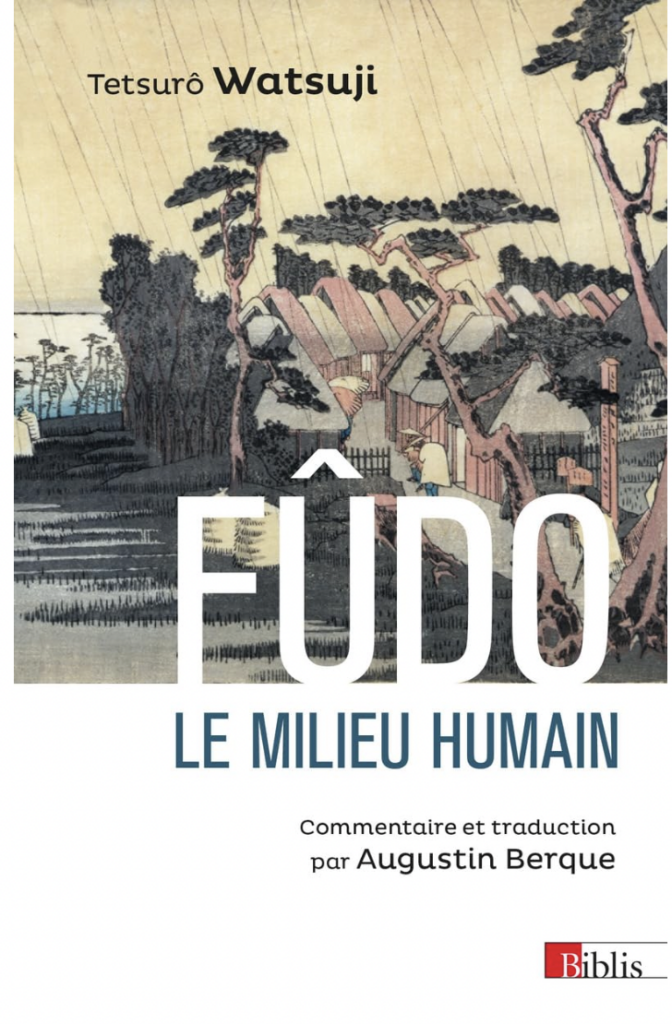
Watsuji was in Berlin when he started reading Heidegger’s Being and Time, which had just come out. Heidegger was then regarded as Husserl’s most eminent student. Kasulis tells us that “Being and Time was rumored to be a trailblazing work that used phenomenology in a new way to address the qualities of human existence, to unravel the subtleties of living in the world.” As he read it, however, Watsuji felt that Heidegger’s phenomenology did not “jibe” with his Japanese experience. Even before starting his journey back home in 1928, Watsuji began to formulate a response to Heidegger’s philosophical anthropology, but Fudo, “possibly the earliest book length response to Heidegger’s Being and Time written in any language,” was not published until 1935.
Fudo has recently been studied from the standpoint of its relevance to the current ecological crisis. Watsuji saw himself as applying Heidegger’s insight to the dimension of “space,” an aspect that had been neglected by Heidegger, who had focused on the dimension of “time.” A translation of the text into English was published in 1961 by Geoffrey Bownas under the title A Climate: A Philosophical Study. This original translation has been heavily criticised by Augustin Berque and other scholars, who hold that its author misunderstood Watsuji’s novel approach he had learned from Heidegger, and, in 2011, Berque published a translation into French under the title Fudo, le Milieu Humain. Bownas’ English translation is still available online as a PDF.
Rinrigaku
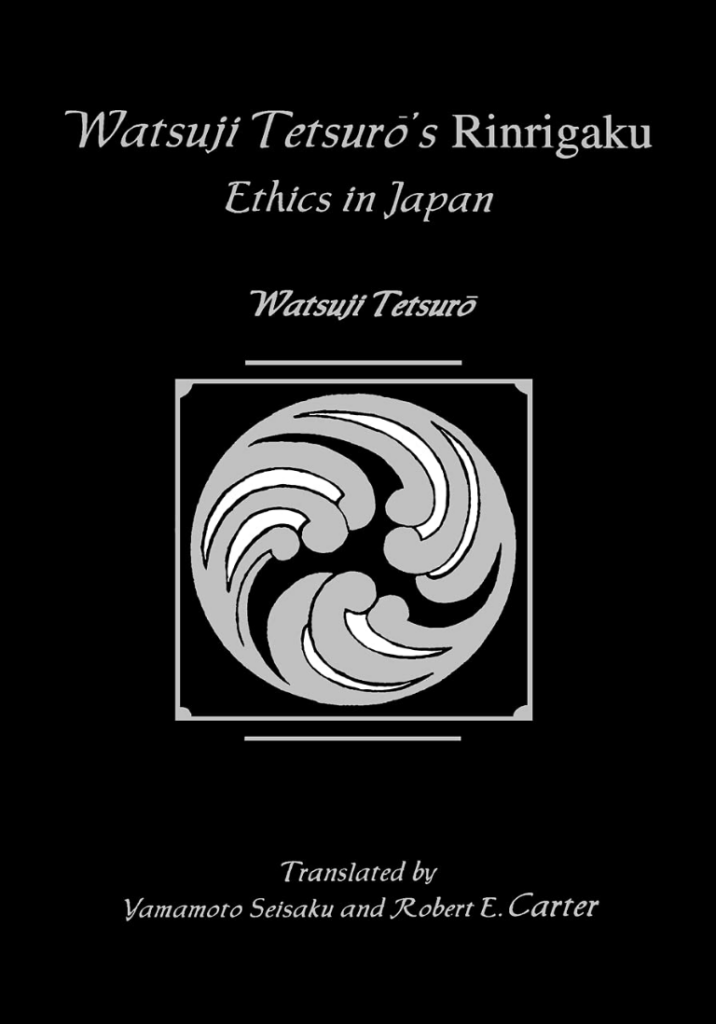
Watsuji’s three volume work has become the go-to resource for academic research on ethics in the Kyoto School. It emerged out of Watsuji’s earlier fascination with the Western focus on individualism, which he later abandoned, not to return to a one-sided focus on the group, but to develop a balanced view based on the concept of “betweenness” (aidagara), the notion that relations come before the “things” that are related. William R Lafleur writes in the foreword of Rinrigaku: “Whether what we call ‘the West’ has always been incorrigibly tilted towards a prioritizing of the individual and a neglect of what Watsuji called “betweenness” (aidagara) is, I think, an important question … During the recent centuries of their intellectual and social life, Europe and America have placed a stress on the individual to such an extent that intellectuals in certain Asian contexts have come to view that emphasis as an imbalance to be challenged. Watsuji was arguably the best read and the most sharply articulate among the Asian thinkers who addressed this problem. And the Ethics is where he best demonstrated that point of view and the challenge to thought implicit within it.”
Sources
Robert E. Carter – Watsuji Tetsuro – Stanford Encyclopedia of Philosophy
Robert E. Carter – The Kyoto School
Thomas P. Kasulis – Engaging Japanese Philosophy
Hee-Jin Kim – Eihei Dogen Mystical Realist
Watsuji Tetsuro – A Climate: Philosophical Study, translated by Geoffrey Bownas (PDF)
Watsuji Tetsuro – Fudo, le milieu humain, translated by Augustin Berque
William R. Lafleur – Watsuji’s Rinrigaku
